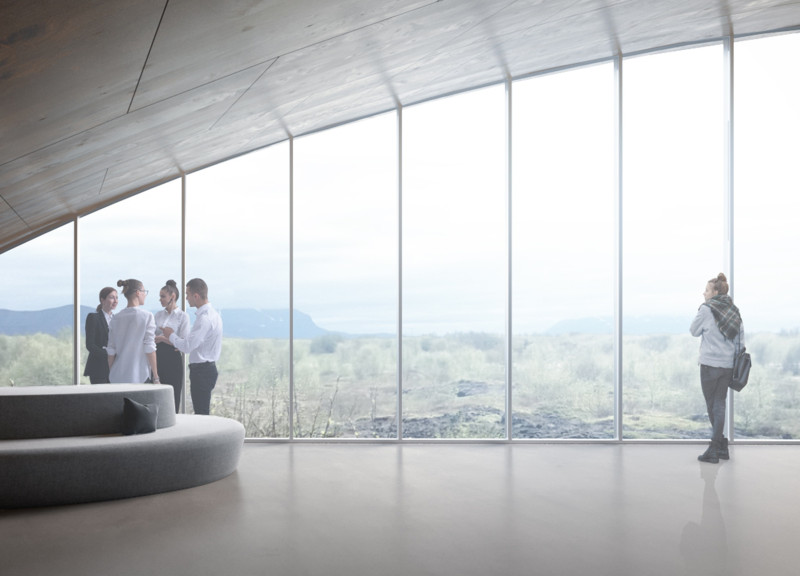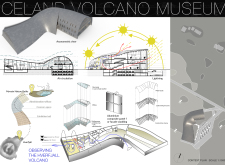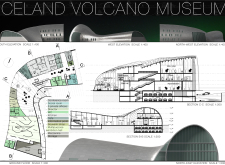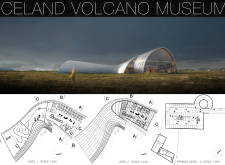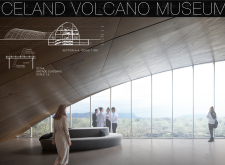5 key facts about this project
The design of the museum showcases an organic architectural philosophy, drawing inspiration from the undulating forms of volcanic hills and the contours of the surrounding landscape. This is evident in the smooth, flowing roof that varies in height, echoing the natural lines found in the nearby topography. By employing a massing strategy that integrates the building into its surrounding environment, the architecture enhances local continuity and highlights the connection between the constructed space and the natural world.
Functionally, the museum is designed to accommodate various visitor activities. It features a spacious exhibition hall that allows for the display of dynamic exhibits related to volcanic phenomena, making it versatile for both temporary and permanent installations. Adjacent to the exhibition spaces, the layout incorporates common areas such as a café and information hubs, promoting social interaction and enhancing the visitor experience. Careful design considerations ensure that these spaces are both inviting and functional, providing comfort while facilitating learning.
Materiality plays a significant role in the overall design. The museum features aluminum composite panels on its façade, chosen for their durability and modern aesthetic. This material not only withstands the local climate but also offers a contemporary look that complements the setting. Inside, the use of a wood frame provides warmth and a sense of familiarity, further enhancing the museum’s welcoming atmosphere. Large glass panels throughout the structure create a visual continuity with the outdoors, inviting natural light into the interior and allowing visitors to enjoy uninterrupted views of the breathtaking Icelandic landscape.
A unique aspect of this project is the incorporation of sustainable practices in its design philosophy. By maximizing natural ventilation and utilizing passive climate control strategies, the museum minimizes its ecological footprint. The careful positioning of windows and the selection of appropriate materials promote energy efficiency, ensuring that the building maintains a comfortable environment for visitors while respecting the surrounding ecology.
Moreover, the design allows for adaptability and multipurpose use, which is vital for a facility of this nature. The interior spaces are organized in a way that can quickly accommodate changes in function—from hosting workshops to providing quiet areas for contemplation or study. This flexibility not only enhances user experience but also enriches the educational potential of the museum.
Through its architectural design, the Iceland Volcano Museum stands out as a celebration of geology and ecology. Its approach to showcasing the power and beauty of volcanic activity fosters a deeper appreciation for the forces that shape our world. By engaging visitors with the environment in a meaningful way, the museum cultivates an understanding that is rooted in respect for nature.
For those interested in architectural details, exploring the project presentation can yield valuable insights into the architectural plans, sections, and designs that define this unique facility. Delving into the architectural ideas and practical solutions employed throughout this project provides a fuller understanding of its impact, purpose, and contribution to the field of architecture.


